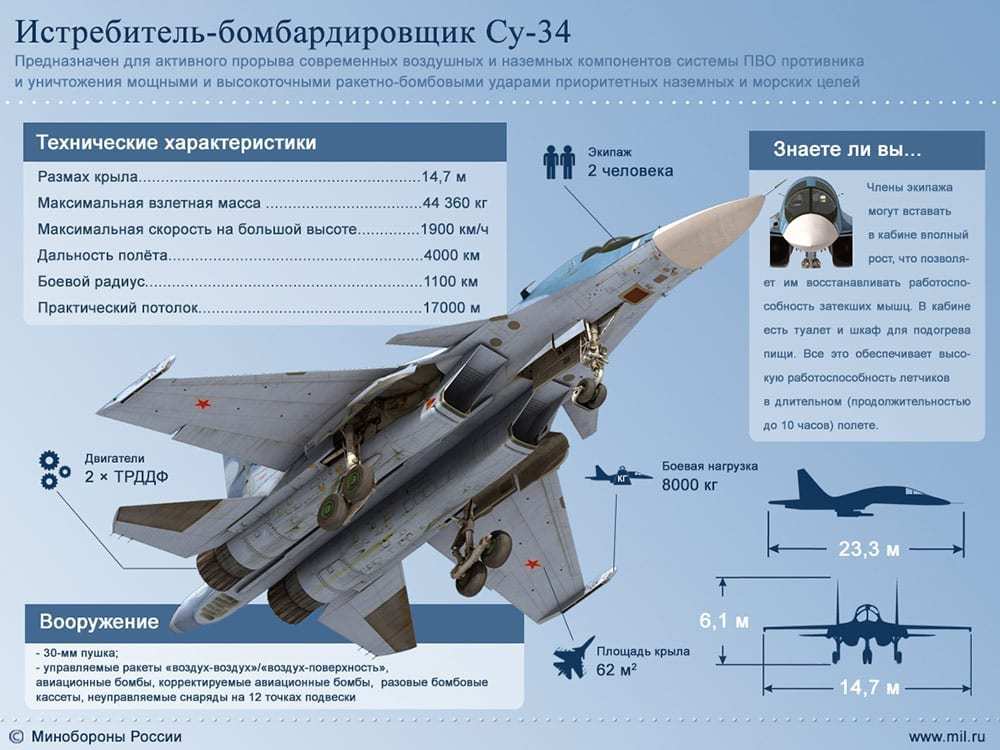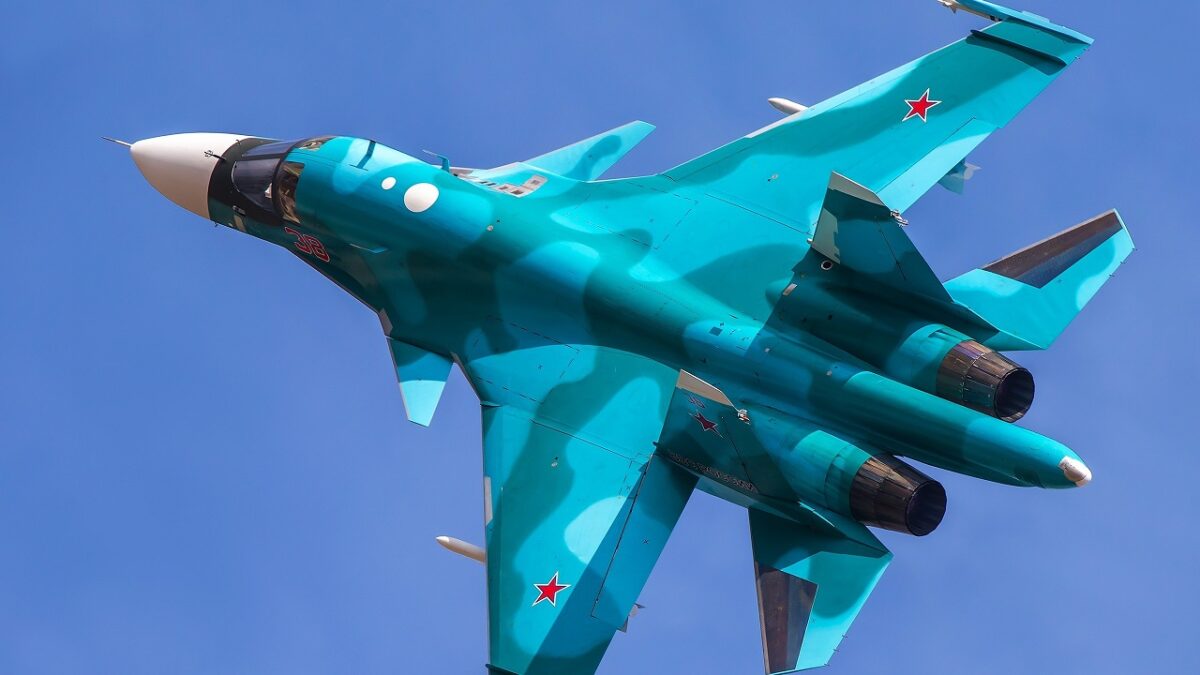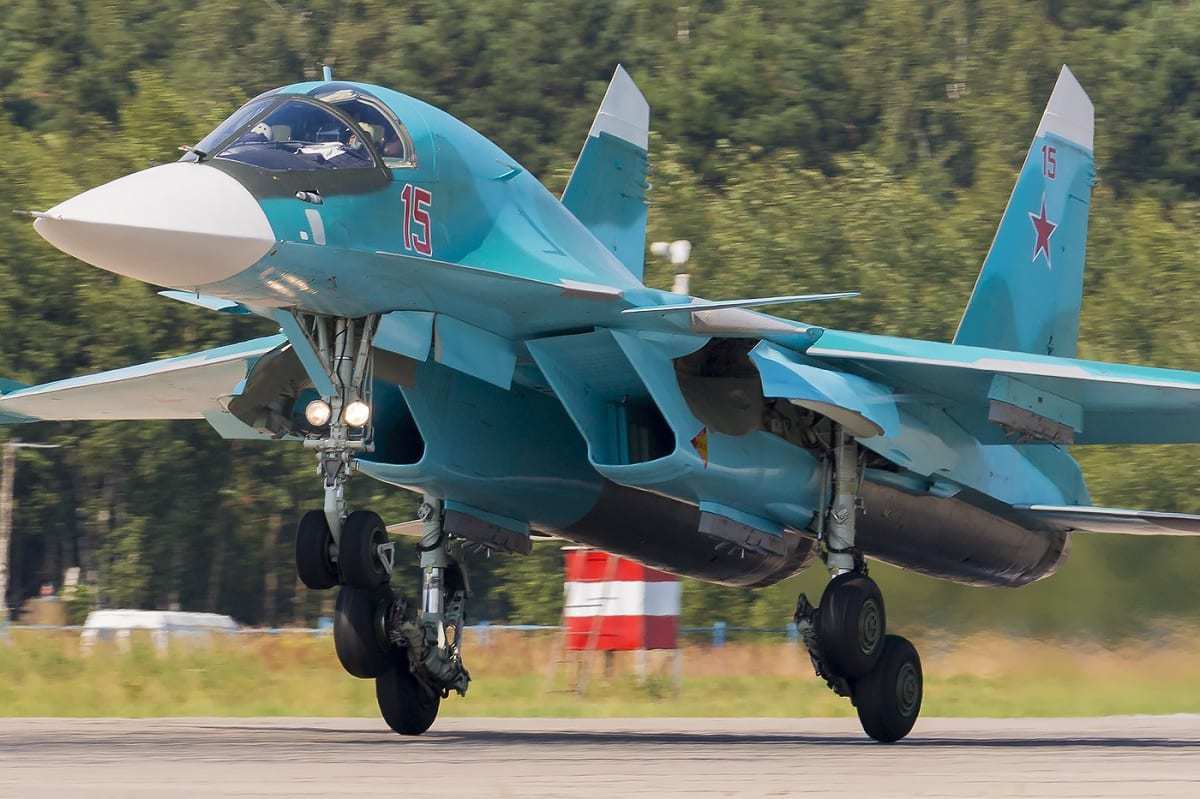The Su-34 was widely seen before Russia’s unprovoked and evil invasion of Ukraine as a powerful weapon in Putin’s aviation arsenal. And yet, the plane has not performed the way Moscow would have liked. A Russian military analyst gives us his take on the Su-34: While most derivative variants of the Su-27 aircraft are air superiority aircraft that fulfill a similar role as their precursor, the Su-34 is designed to fulfill a very different role. Instead, the Fullback (as it is referred to under its NATO designation) is designed to act as a strike aircraft and features numerous design changes which make it different than its cousins such as the Su-30 and Su-35. This unique configuration allows the Fullback to occupy a remarkable role within the Russian Aerospace Forces.
Development of the Su-34
To understand the Su-34 as an aircraft, one must have a background understanding of how the Fullback came to be.
Initially dubbed the Su-27IB, development on the Su-34 began in earnest in 1986, and a prototype of the aircraft developed out of a training model of the Flanker first flew in 1990, on the eve of the collapse of the Soviet Union. Development continued following the Soviet collapse and after significant reworks to fit new requirements issued by the Russian Air Force.
The Su-34 saw combat trials in the 2008 Russo-Georgian War, before finally entering service with the Russian Air Force in 2014.
Technical Details of the Su-34 Fullback
The Fullback has remained largely faithful to the overall design of the Su-27 in terms of its layout and structure, particularly towards the tail end of the aircraft.
However, its principal difference from the Flanker is in its nose, forward fuselage, and cockpit. The Su-34’s cockpit seats two pilots side-by-side as opposed to the single pilot of the default Su-27, and is more heavily armored than the Flanker.
In its default configuration, the Su-34 is fitted with two afterburning AL-31F turbofan engines which allow the aircraft to reach a max speed of Mach 1.6 at altitude. When utilizing its internal fuel tanks and its maximum three drop tanks, the Su-34 is estimated to be able to carry more than 40 thousand pounds of fuel, giving it a maximum ferry range of 2,485 miles.

Sukhoi Su-34 infographic
In keeping with its role as an attack aircraft, the Su-34 is equipped with ten hardpoints which allow it to carry a variety of air-to-surface missiles, guided and unguided bombs, anti-ship missiles, rockets, anti-radiation missiles, and air-to-air missiles, as well as a 30mm GSh-301 cannon.
The Su-34’s Suboptimal Ukraine Performance
Despite its on-paper capabilities, the Fullback’s performance has been less than optimal in Ukraine. According to Britain’s Defence Secretary Ben Wallace, basic civilian GPS receivers have been found in the cockpits of downed Su-34s, raising questions of the effectiveness of the Fullback’s onboard navigation systems. The aircraft appears to have suffered non-negligible losses against the Ukrainian Air Force and Ukrainian air defenses, with 10 Su-34 aircraft reportedly having been shot down to date in Russia’s invasion of Ukraine according to the blog Oryx.
It is possible that Russia’s military leadership has been employing the Su-34 overconfidently based on its strong performance in Syria. However, it is entirely foreseeable that an attack aircraft like the Su-34 would see greater success in Syria (where it would have faced little to no actual air defense threats from the Syrian insurgent groups it engaged there) in comparison to Ukraine, where Russian aircraft are up against active Ukrainian air defenses and interceptors.

Russian Su-34 fighter-bomber. Image Credit: Creative Commons.
Despite its poor performance in Moscow’s invasion of Ukraine, Russia’s Su-34 is likely to remain in service for some time since it was in part designed and produced to help phase out the older Tu-23M bomber and Su-24 attack aircraft. Additional combat usage will also help determine if the Su-34 Fullback is just an effective aircraft being poorly employed in Ukraine, or if it has unmitigable drawbacks on today’s battlefield.

Su-34 fighter from Russian Air Force. Image Credit: Creative Commons.
Wesley Culp is a Research Fellow at the Center for the Study of the Presidency and Congress. He regularly writes on Russian and Eurasian leadership and national security topics and has been published in The Hill as well as in the Diplomatic Courier. He can be found on Twitter @WesleyJCulp.

